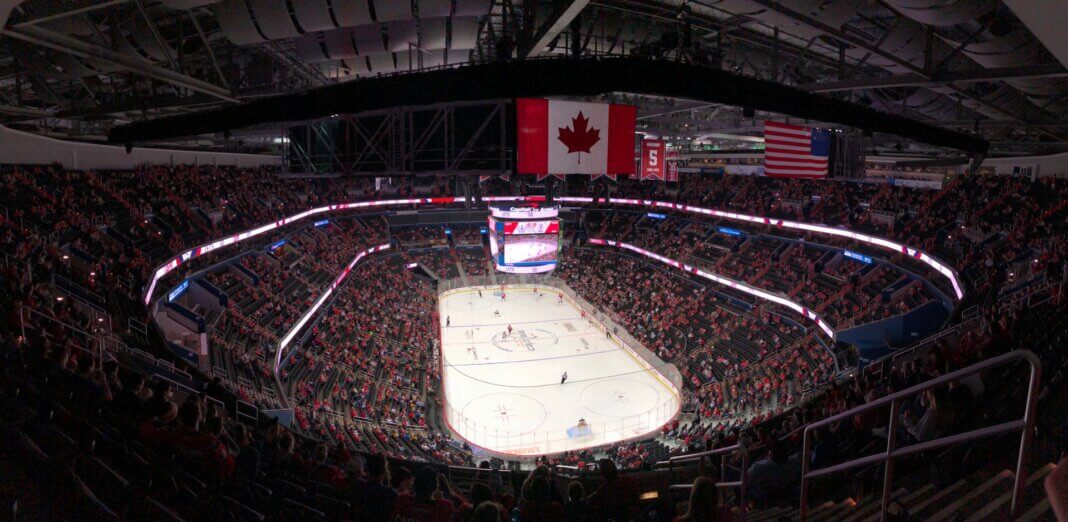The Evolution of Smart Hockey Arenas: Where Innovation Meets Sustainability
As technology continues to reshape our world, the spaces where we gather—especially sports venues—are undergoing a transformation of their own. Today’s hockey arenas are not only embracing high-tech innovations to enhance the fan experience but are also becoming models of sustainability and environmental responsibility.
These “green smart arenas” are redefining what it means to be both technologically advanced and environmentally conscious, combining immersive experiences with a strong commitment to reducing ecological impact.
The Rise of Eco-Smart Arenas
A smart arena is more than just a tech-savvy venue. It’s a holistic space that uses intelligent systems to optimize operations, elevate fan engagement, and minimize its carbon footprint. Leveraging the power of the Internet of Things (IoT), artificial intelligence (AI), and real-time analytics, these arenas are transforming not only how fans experience the game but also how sports facilities can operate more sustainably.
Sustainability is woven into the foundation of these arenas—from the materials used in construction to how the building consumes energy and handles waste. With climate change concerns front and center, green arenas are setting a new standard in the world of professional sports.
Seamless, Sustainable Fan Engagement
The shift to digital ticketing and mobile apps isn’t just about convenience—it’s also a major step toward reducing paper waste and single-use materials. Fans can enter the arena, order concessions, and purchase merchandise—all from their smartphones. Facial recognition systems and contactless payment technology further streamline the process, reducing the need for physical tickets, receipts, or plastic passes.
Interactive digital signage and in-arena apps keep fans connected while eliminating the need for printed programs, flyers, or static signage. These changes reduce waste while also enhancing the experience with real-time stats, game highlights, and interactive features tailored to individual preferences.
Greener Game-Day Experiences
Smart arenas are also integrating immersive technologies like augmented reality (AR) and virtual reality (VR) in ways that not only elevate the fan experience but also reduce the need for additional hardware, signage, and printed materials. Fans can access stats, replays, and exclusive content through wearable tech or their smartphones, minimizing energy use and maximizing efficiency.
In-seat ordering systems and mobile menus reduce congestion and improve service delivery while also supporting more sustainable food service practices. Some arenas are even incorporating compostable packaging, digital receipts, and AI-driven inventory systems to reduce food waste.
Energy Efficiency at the Core
One of the most impressive aspects of modern smart arenas is their approach to energy and resource management. These venues are designed with state-of-the-art HVAC systems, smart lighting, and responsive climate controls that adapt to occupancy levels and real-time weather conditions. LED lighting, solar panels, and high-efficiency insulation all contribute to significant reductions in energy consumption.
Water conservation is also a priority. Many arenas use water recycling systems for cooling and restroom facilities, as well as drought-resistant landscaping outside the venue.
Waste reduction is achieved through smart waste monitoring systems that track bin usage and guide efficient recycling and composting practices. These systems ensure that materials are sorted correctly, reducing landfill contributions and increasing the effectiveness of green initiatives.
Smarter Security, Safer Spaces
While sustainability is a central focus, smart arenas also lead the way in safety. Integrated surveillance systems powered by AI help monitor crowds for safety issues without the need for excessive infrastructure or human intervention. Access control systems use biometric technology to reduce reliance on plastic badges or temporary passes, cutting down on waste while maintaining tight security protocols.
Data for a Greener Tomorrow
The data generated by these arenas does more than help teams and sponsors—it informs sustainable practices. Facility managers can use analytics to monitor energy consumption, adjust usage patterns, and make more environmentally friendly decisions. For example, tracking peak fan movement can lead to smarter lighting and HVAC use, while understanding concession trends helps reduce food waste.
Sponsors also benefit from the sustainable angle. Environmentally conscious brands can align with the venue’s green initiatives through in-app advertising, digital billboards, and branded sustainability programs that highlight shared values with fans.
Conclusion
The future of hockey arenas lies not just in creating more thrilling fan experiences—but in doing so responsibly. Smart arenas are proving that cutting-edge technology and sustainability can go hand-in-hand. As these green venues continue to evolve, they set a powerful example of how innovation, efficiency, and environmental stewardship can shape the next generation of sports experiences.
In a world where every decision carries ecological weight, smart hockey arenas are leading the way—not just in entertainment, but in building a greener future for the game, the fans, and the planet.
Author Bio:
Matt Stathopoulos is Marketing Coordinator for ProStockHockey.com, an online retailer specializing in authentic pro stock hockey gear originally made for NHL players. He is a lifelong hockey fan and avid hockey equipment enthusiast. His hockey passion and knowledge are on display in every blog post, social post, and fan/customer interaction. Stathopoulos lives and breathes hockey!
